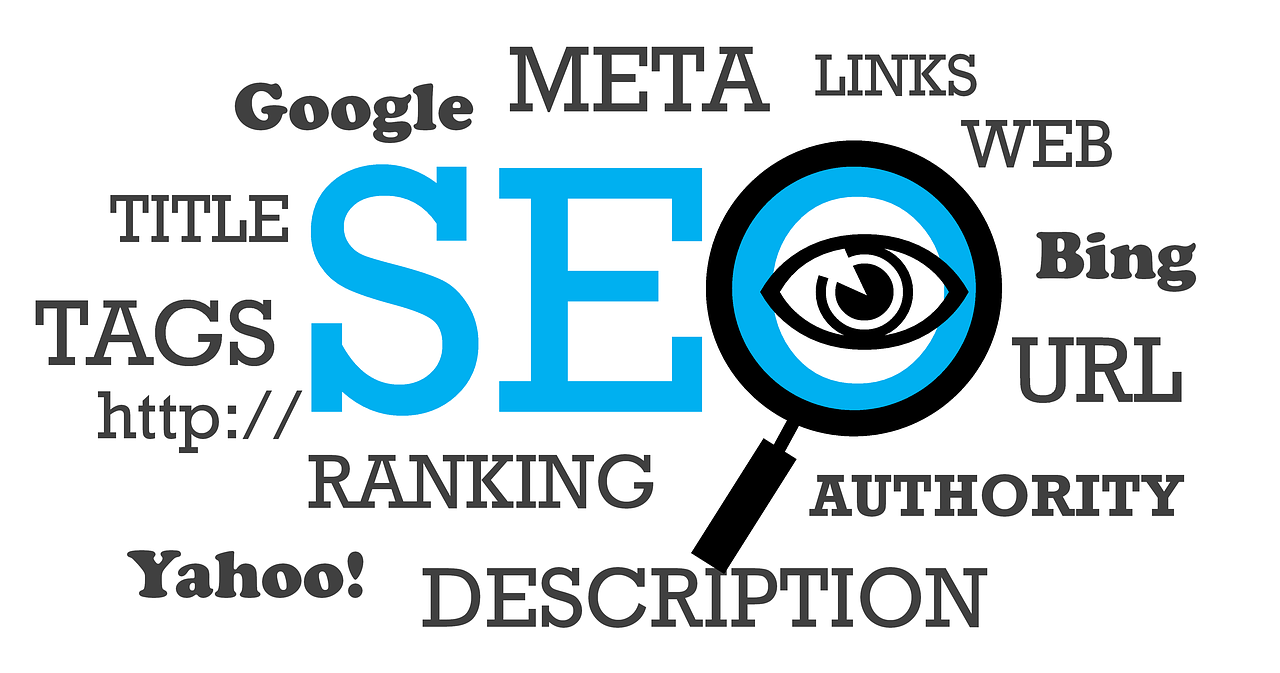This Article has been revised, edited and added to, by Poulomi Chakraborty.
In today’s digital age, having a strong online presence is essential for healthcare providers. Patients are increasingly turning to the internet to find healthcare services, read reviews, and book appointments. One of the most powerful tools to enhance your online visibility and attract local patients is Google My Business (GMB). Optimizing your GMB profile can significantly improve your practice’s chances of appearing in local search results and Google Maps, making it easier for potential patients to find and contact you. This comprehensive guide will walk you through the steps to optimize your Google My Business profile specifically for healthcare providers.
Understanding the Importance of Google My Business

Google My Business is a free tool that allows businesses to manage their online presence across Google, including Search and Maps. For healthcare providers, optimizing a GMB profile is crucial because it enhances local SEO, making your practice more visible to people searching for healthcare services in your area.
A well-optimized GMB profile can attract more patients, improve your online reputation, and provide valuable information to your community.
Comparison: Google My Business vs. Traditional SEO
To appreciate the value of optimizing your GMB profile, it’s helpful to compare it with traditional SEO. Traditional SEO focuses on improving your website’s visibility on search engines by using keywords, creating high-quality content, and building backlinks.
While this is essential for driving traffic to your website, it can take time to see significant results, and it often targets a broader audience.
On the other hand, Google My Business is specifically designed to enhance local SEO. This means it helps your practice appear in local search results, making it easier for people in your community to find you.
When someone searches for “dentist near me” or “urgent care in [city],” having an optimized GMB profile can place your practice at the top of the search results, often in the highly visible “Local Pack.” This immediate visibility can drive more traffic to your website and your physical location.
Why Google My Business Matters for Healthcare Providers
For healthcare providers, being visible in local search results is vital. Patients prefer healthcare services that are conveniently located, and GMB helps bridge the gap between their needs and your services.
When patients search for healthcare providers, they often look for detailed information such as office hours, contact details, patient reviews, and services offered. An optimized GMB profile provides all this information in one place, enhancing the user experience and building trust.
Moreover, Google My Business allows you to post updates, share news, and highlight special services or promotions. This dynamic content keeps your profile current and engaging, which can further attract potential patients.
The ability to interact with reviews, both positive and negative, also demonstrates your commitment to patient care and responsiveness, fostering a positive reputation.
Key Features of Google My Business for Healthcare
Several features of Google My Business are particularly beneficial for healthcare providers. Understanding and utilizing these features can maximize your profile’s effectiveness:
- Business Information: Ensuring that your name, address, phone number, and business hours are accurate and consistent across all platforms is crucial. This consistency helps Google verify your business and improves your search rankings.
- Reviews: Patient reviews are a critical component of your GMB profile. Positive reviews can boost your reputation and attract more patients. Engaging with reviews, especially by responding to feedback, shows that you value patient input and are committed to improving their experience.
- Posts: Google My Business allows you to create posts to share updates, news, and promotions. Regularly posting on your profile keeps your information current and can engage potential patients with relevant content.
- Photos and Videos: Visual content helps potential patients get a better sense of your practice. High-quality photos and videos of your office, staff, and services can make your profile more appealing and trustworthy.
- Q&A Section: The Questions and Answers section allows patients to ask questions directly on your GMB profile. By actively managing this section, you can provide accurate information and demonstrate your commitment to patient care.
Comparison: Google My Business vs. Social Media
While social media platforms like Facebook and Instagram are valuable for engaging with your audience, Google My Business offers distinct advantages for local SEO.
Social media is excellent for building a community, sharing updates, and engaging with followers, but it doesn’t directly impact your local search rankings the way GMB does. Google My Business integrates directly with Google Search and Maps, which are the primary tools people use to find local services.
Furthermore, GMB profiles appear prominently in search results, often above organic results. This prime placement can significantly increase your visibility and attract more local traffic.
While social media should certainly be part of your overall marketing strategy, focusing on optimizing your GMB profile can provide immediate and tangible benefits for local search visibility.
Setting Up Your Google My Business Profile

Setting up your Google My Business profile is the first step toward optimizing it for local search visibility. Here’s how to get started and ensure that all essential information is accurately provided.
Claiming Your Business
Before you can optimize your GMB profile, you need to claim your business. If your practice is already listed, you’ll need to verify ownership. This process typically involves receiving a postcard from Google with a verification code that you’ll enter into your GMB account. This verification process is crucial as it confirms to Google that you are the rightful owner of the business.
To claim your business, go to the Google My Business website, sign in with your Google account, and search for your practice. If it appears in the search results, select it and follow the prompts to claim it. If your practice doesn’t appear, you can add it manually by providing your business name, address, and contact information.
Providing Accurate Business Information
Once your business is claimed, the next step is to fill out your profile with accurate and comprehensive information. This includes your practice name, address, phone number, and hours of operation.
Ensuring that this information is correct and consistent across all online platforms is critical for local SEO. Inconsistent information can confuse both search engines and potential patients, negatively impacting your search rankings.
Include additional details such as your website URL, appointment booking link, and service areas. This information helps potential patients understand what you offer and how to reach you.
Accurate and detailed information not only improves your SEO but also enhances the user experience by providing everything they need to know about your practice in one place.
Choosing the Right Business Category
Selecting the appropriate primary and secondary business categories is crucial. These categories help Google understand what your practice offers and match your profile with relevant searches.
For healthcare providers, the primary category should be as specific as possible. For example, a dental practice might choose “Dentist” as the primary category, while a specialized service like orthodontics would select “Orthodontist.”
You can also add secondary categories to further describe your services. For instance, a general practitioner might include categories like “Family Doctor” or “Primary Care Physician.” These additional categories help broaden your visibility for related searches and ensure that your practice appears for a wide range of relevant queries.
Writing a Compelling Business Description
Your business description is an opportunity to tell potential patients about your practice, what makes it unique, and the services you offer. This description should be concise, engaging, and informative.
Incorporate relevant keywords naturally to improve your local SEO, but avoid keyword stuffing as this can detract from readability and credibility.
For example, a compelling description for a pediatric clinic might read: “At Sunshine Pediatric Clinic, we provide comprehensive healthcare for children in the Miami area.
Our experienced team offers a range of services including routine check-ups, immunizations, and specialized care for chronic conditions. We are committed to creating a welcoming and friendly environment for families.”
Adding Photos and Videos
High-quality photos and videos can significantly enhance your GMB profile. Visual content helps potential patients get a sense of your practice’s atmosphere and the quality of care you provide. Include photos of the exterior and interior of your office, as well as images of your staff and any special equipment or amenities.
Videos can also be very effective. Consider adding short videos that introduce your practice, showcase your services, or highlight patient testimonials. Regularly updating your photos and videos keeps your profile fresh and engaging, encouraging more interaction and trust from potential patients.
Utilizing Attributes and Services
Google My Business allows you to add specific attributes and services to your profile. Attributes can include details like wheelchair accessibility, availability of Wi-Fi, and whether you offer telehealth services. These attributes provide additional information that can help patients choose your practice based on their specific needs.
Listing your services in detail is also important. Break down the various services you offer and include descriptions for each. For example, a dermatology clinic might list services like “Skin Cancer Screening,” “Acne Treatment,” and “Cosmetic Procedures.” Detailed service listings help search engines understand your offerings and improve your chances of appearing in relevant searches.
Using Google My Business Posts
Google My Business posts allow you to share updates, news, and special offers directly on your profile. These posts can keep your profile dynamic and provide timely information to potential patients. For healthcare providers, posts can include information about flu shot availability, new healthcare services, upcoming events, or health tips.
Each post should include a call to action, such as “Book an Appointment” or “Learn More.” Regularly posting on your GMB profile not only keeps your information current but also engages your audience and improves your local SEO by showing that your practice is active and responsive.
Managing and Responding to Reviews

Patient reviews are a critical aspect of your Google My Business profile. Positive reviews can enhance your reputation and attract more patients, while responding to reviews demonstrates your commitment to patient care. Here’s how to effectively manage and respond to reviews to optimize your GMB profile.
Encouraging Positive Reviews
Encouraging satisfied patients to leave positive reviews can significantly boost your GMB profile. Positive reviews not only improve your search rankings but also build trust with potential patients.
After a successful visit, ask patients if they would be willing to share their experience online. You can do this through follow-up emails, text messages, or during the checkout process at your office.
Make it easy for patients to leave reviews by providing direct links to your Google My Business profile. Including a simple call to action, such as “We’d love to hear about your experience. Please leave us a review!” can motivate patients to share their feedback.
Responding to Positive Reviews
Responding to positive reviews shows appreciation and reinforces the patient’s decision to choose your practice. When responding, personalize your message to acknowledge specific points mentioned in the review. For example, if a patient praises a particular staff member, mention them by name and thank the patient for their kind words.
A response to a positive review might look like this: “Thank you so much for your kind words, John! We’re thrilled to hear that you had a great experience with Dr. Smith. We look forward to serving you again in the future.”
Handling Negative Reviews
Negative reviews require a thoughtful and professional approach. Addressing these reviews promptly and constructively can mitigate their impact and demonstrate your commitment to resolving issues.
Begin by acknowledging the patient’s concerns and apologizing for any inconvenience they experienced. Offer to discuss the matter further offline to resolve the issue.
For example, a response to a negative review might be: “We’re sorry to hear about your experience, Jane. Our goal is to provide excellent care, and it seems we fell short this time. Please contact our office at [phone number] so we can discuss how to make things right.”
Learning from Reviews
Reviews provide valuable feedback that can help you improve your services. Regularly analyze reviews to identify common themes or recurring issues. Positive reviews can highlight what you’re doing well, while negative reviews can point out areas for improvement. Use this feedback to make necessary adjustments and enhance the overall patient experience.
For instance, if multiple reviews mention long wait times, consider revising your scheduling process to reduce patient wait times. Addressing these concerns not only improves patient satisfaction but also can lead to more positive reviews in the future.
Highlighting Reviews on Your Website
Featuring positive reviews on your website can build credibility and trust with potential patients. Create a dedicated testimonials page or integrate a review widget that displays live reviews from your Google My Business profile. Highlighting real patient experiences can provide social proof and encourage new patients to choose your practice.
Additionally, consider including patient testimonials in your marketing materials, such as newsletters, brochures, and social media posts. Sharing positive feedback from patients can reinforce your practice’s reputation and attract more patients.
Utilizing Review Management Tools
Managing reviews across multiple platforms can be time-consuming. Review management tools like BirdEye, Podium, or Yext can help streamline the process by aggregating reviews from various sites into one dashboard. These tools allow you to monitor, respond to, and analyze reviews efficiently, ensuring that you stay on top of patient feedback.
Regularly using these tools helps you maintain a positive online reputation and ensures that no review goes unnoticed. Staying engaged with your reviews across all platforms is crucial for building and maintaining trust with your patients.
Addressing Fake Reviews
Occasionally, you might encounter fake or malicious reviews. These reviews can harm your reputation and should be addressed promptly. Report fake reviews to Google for removal by flagging them as inappropriate. Provide any necessary evidence to support your claim, such as records showing the reviewer was never a patient at your practice.
In the meantime, respond to the review professionally, stating that you cannot find any record of their visit and inviting them to contact your office to resolve any misunderstandings. This approach shows that you take all feedback seriously while protecting your practice’s reputation.

Utilizing Google My Business Features for Healthcare
Google My Business offers various features that can be particularly beneficial for healthcare providers. Utilizing these features effectively can enhance your profile’s visibility and engagement, making it easier for potential patients to find and interact with your practice.
Google My Business Posts
Google My Business Posts allow you to share timely updates, news, and special offers directly on your GMB profile. These posts appear in your profile and can be a great way to communicate with your patients. For healthcare providers, this feature can be used to announce new services, provide health tips, or share updates about your practice.
When creating posts, keep them concise and informative. Include a call to action, such as “Schedule an Appointment” or “Learn More,” to encourage interaction. Regularly updating your posts can keep your profile fresh and engaging, providing valuable information to your patients.
For example, you might post about flu shot availability at the start of flu season, or share tips for staying healthy during the winter months. These posts not only provide useful information but also show that your practice is active and responsive to patient needs.
Photos and Videos
Adding high-quality photos and videos to your Google My Business profile can significantly enhance its appeal. Visual content helps potential patients get a better sense of your practice and the services you offer. Include photos of the exterior and interior of your office, staff members, and any special equipment or amenities.
Videos can be especially engaging. Consider creating short videos that introduce your team, showcase your facilities, or highlight patient testimonials. These videos can make your profile more dynamic and help build trust with potential patients. Regularly updating your photos and videos keeps your profile current and visually appealing.
Services and Attributes
Google My Business allows you to list the services your practice offers. This feature is particularly useful for healthcare providers, as it provides potential patients with a clear understanding of what you offer. Include detailed descriptions for each service, incorporating relevant keywords to improve your local SEO.
Attributes are another valuable feature. These are specific details about your practice that can help patients make informed decisions. Attributes might include information about wheelchair accessibility, availability of Wi-Fi, and whether you offer telehealth services. Ensuring these attributes are accurate and up-to-date can enhance your profile’s usefulness and appeal.
For instance, listing telehealth as an available service can attract patients looking for virtual consultations. Highlighting attributes like “Wheelchair accessible” can assure patients with mobility issues that your practice is equipped to accommodate their needs.
Q&A Section
The Questions and Answers section of Google My Business allows potential patients to ask questions directly on your profile. Actively managing this section by providing prompt and accurate responses can enhance your profile’s usefulness and demonstrate your commitment to patient care.
Encourage your staff to monitor this section regularly and respond to questions as they arise. Providing detailed and informative answers can help potential patients make informed decisions and reduce the number of phone calls to your office with common inquiries.
For example, if a potential patient asks about insurance acceptance, a detailed response can clarify which insurance plans you accept and any payment options available. This proactive approach can improve patient satisfaction and trust.
Insights and Analytics
Google My Business provides valuable insights and analytics that can help you understand how patients are interacting with your profile. These insights include data on how many people viewed your profile, how they found it, and what actions they took, such as visiting your website or requesting directions.
Use these insights to gauge the effectiveness of your GMB optimization efforts and identify areas for improvement. For instance, if you notice a high number of profile views but low engagement, consider updating your business description or adding more compelling photos and posts. Regularly reviewing and acting on these insights can help you continually improve your local SEO performance.
Booking Button Integration
Google My Business allows you to integrate booking buttons directly into your profile. This feature is particularly useful for healthcare providers, as it enables patients to schedule appointments easily. By integrating your appointment scheduling system with GMB, you can streamline the booking process and make it more convenient for patients.
Ensure that your booking button is prominently displayed on your profile and that the scheduling process is simple and user-friendly. This integration can increase appointment bookings and improve the overall patient experience.
Messaging Feature
The messaging feature on Google My Business allows potential patients to send messages directly to your practice. This feature provides an additional channel for communication, making it easier for patients to ask questions or request information.
Ensure that your messaging feature is enabled and that your staff is trained to respond promptly. Quick and helpful responses can enhance patient satisfaction and build trust. This feature is especially useful for answering quick questions or providing information that may not be readily available on your profile.
Ensuring NAP Consistency Across All Platforms

Ensuring that your Name, Address, and Phone Number (NAP) are consistent across all platforms is a crucial aspect of optimizing your Google My Business profile for local SEO.
Inconsistent NAP information can confuse search engines and potential patients, leading to lower search rankings and reduced trust. Here’s how to maintain consistent NAP details across the web.
The Importance of NAP Consistency
NAP consistency is vital because search engines use this information to verify your business’s legitimacy and relevance. Inconsistent NAP details can signal to search engines that your information is unreliable, which can negatively impact your local search rankings.
Additionally, potential patients rely on accurate contact information to find and reach your practice. Inconsistent details can lead to missed opportunities and frustration.
Conducting a NAP Audit
The first step to ensuring NAP consistency is to conduct a thorough audit of all the places where your practice’s information appears online. This includes your website, Google My Business profile, social media profiles, and various online directories such as Yelp, Healthgrades, and Zocdoc. List all these platforms and check the NAP details for accuracy and consistency.
During your audit, pay close attention to even minor differences, such as the use of abbreviations or formatting variations. For example, “123 Main St.” should consistently appear as such and not sometimes as “123 Main Street” or “123 Main St, Suite 100.”
Correcting Inconsistent NAP Information
If you find inconsistencies in your NAP details, take steps to correct them promptly. Update your information on each platform to ensure it matches exactly. This may involve logging into each directory or profile and manually editing the details.
For example, if your practice’s phone number appears as “(123) 456-7890” on your website but “123-456-7890” on your Google My Business profile, choose one format and apply it universally. Consistency in every detail helps search engines recognize and validate your business information.
Using Data Aggregators
Data aggregators are services that distribute your business information to various online directories and platforms. By using a data aggregator, you can streamline the process of ensuring consistent NAP information across the internet. These services update your business details across multiple platforms, reducing the time and effort required to maintain consistency manually.
Popular data aggregators include Yext, Moz Local, and BrightLocal. These tools help you manage your online presence more efficiently, ensuring that your NAP information remains accurate and consistent everywhere it appears.
Regular Monitoring and Maintenance
Ensuring NAP consistency is not a one-time task; it requires regular monitoring and maintenance. Set up a schedule to periodically review your business details across all platforms, especially after making any changes to your practice’s name, address, or phone number. Regular audits help catch and correct any inaccuracies promptly.
Tools like Google Alerts can notify you when your practice is mentioned online, allowing you to track new citations and respond accordingly. Monitoring tools like Whitespark or SEMrush can help you track your NAP information and identify discrepancies.
Handling NAP Changes
If your practice undergoes changes such as moving to a new location, adding a new branch, or changing your phone number, update your NAP information immediately across all platforms. Delays in updating this information can lead to confusion and missed opportunities, as potential patients might encounter outdated details.
For example, if your practice relocates, update your address on your website, Google My Business profile, social media profiles, and all online directories as soon as possible. This ensures that search engines and potential patients have access to the most accurate and current information.
Benefits of Accurate NAP Information
Maintaining accurate and consistent NAP information offers several benefits. It enhances your local SEO by helping search engines validate your business details, leading to higher search rankings. Consistent information also builds trust with potential patients, making it easier for them to find and contact your practice.
Accurate NAP details also improve the user experience by providing patients with the correct information they need to reach you. This can lead to increased appointment bookings, higher patient satisfaction, and a stronger online reputation.
Leveraging Citation Management Tools
Citation management tools can simplify the process of ensuring NAP consistency across multiple platforms. These tools scan the web for your business information, identify inaccuracies, and update your details across various platforms. Using citation management tools helps maintain accurate and consistent NAP information, enhancing your local SEO efforts.
Regular reports from citation management tools can provide insights into your local search performance and highlight areas for improvement. By staying proactive with NAP management, you can ensure that your practice maintains a strong and trustworthy online presence.
Leveraging Patient Reviews for Enhanced Visibility and Trust

Patient reviews are one of the most powerful tools at your disposal for improving your Google My Business profile. Positive reviews can boost your practice’s visibility in search results and build trust with potential patients. Here’s how to effectively leverage patient reviews to enhance your GMB profile.
The Power of Positive Reviews
Positive reviews are crucial for local SEO because they signal to Google that your practice is reputable and provides high-quality care. Reviews are a form of user-generated content that search engines value highly. The more positive reviews you have, the more likely your practice is to rank higher in local search results.
For example, when potential patients search for healthcare providers, practices with numerous positive reviews are more likely to appear at the top of the search results. These reviews also provide social proof, making it easier for new patients to trust your practice.
Encouraging Patients to Leave Reviews
To gather more reviews, encourage your patients to share their experiences online. This can be done through follow-up emails, text messages, or in-person requests after appointments. Make it easy for patients to leave reviews by providing direct links to your Google My Business profile.
Here’s an example of a simple request: “We value your feedback! If you had a positive experience at our practice, please consider leaving us a review on Google. Your feedback helps us improve and helps other patients find us.”
Responding to Reviews
Responding to reviews is an important part of managing your online reputation. It shows that you value patient feedback and are committed to providing excellent care. When responding to positive reviews, thank the patient and personalize your response by mentioning specific aspects of their review.
For negative reviews, respond promptly and professionally. Acknowledge the patient’s concerns, apologize for any issues, and offer to resolve the matter offline. This demonstrates your dedication to patient satisfaction and can help mitigate the impact of negative feedback.
Using Reviews for Continuous Improvement
Reviews provide valuable insights into what your practice is doing well and where there is room for improvement. Regularly analyze your reviews to identify common themes or recurring issues. Positive feedback can highlight what patients appreciate most about your practice, while negative feedback can point out areas that need attention.
For example, if multiple reviews mention long wait times, consider reevaluating your scheduling process to reduce patient wait times. By addressing these issues, you can improve the overall patient experience and encourage more positive reviews in the future.
Featuring Reviews in Your Marketing
Positive reviews can be a powerful marketing tool. Feature them on your website, social media profiles, and in your marketing materials to build credibility and trust with potential patients. Highlighting real patient experiences can provide social proof and encourage new patients to choose your practice.
For instance, you can create a testimonials page on your website that showcases positive reviews from satisfied patients. Sharing excerpts from reviews on social media can also engage your audience and attract more patients.
Leveraging Google My Business Insights
Google My Business provides insights into how patients are interacting with your profile. These insights include data on how many people viewed your profile, how they found it, and what actions they took, such as visiting your website or requesting directions. Use these insights to understand the effectiveness of your GMB optimization efforts and identify areas for improvement.
For example, if you notice a high number of profile views but low engagement, consider updating your business description or adding more compelling photos and posts. Regularly reviewing and acting on these insights can help you continually improve your local SEO performance.
Managing and Mitigating Negative Reviews
Negative reviews are inevitable, but how you handle them can make a significant difference. Address negative reviews promptly and professionally. Apologize for any issues the patient experienced and offer to resolve the matter offline. This approach shows that you take patient feedback seriously and are committed to improving their experience.
By actively managing and responding to reviews, you can mitigate the impact of negative feedback and demonstrate your commitment to patient satisfaction. This can help maintain a positive online reputation and attract more patients to your practice.
Building a Review-Driven Culture
Creating a culture that values patient feedback and encourages reviews can enhance your GMB profile and overall patient satisfaction. Train your staff to ask for reviews and emphasize the importance of patient feedback in improving your services. By fostering a review-driven culture, you can gather more reviews and enhance your practice’s online presence.
For example, make it a standard practice to ask patients for reviews during checkout or follow-up communications. Provide staff with templates or scripts to make the process easier and more consistent. By regularly seeking feedback, you can ensure that your practice continuously improves and remains responsive to patient needs.
Conclusion
Optimizing your Google My Business profile is essential for healthcare providers looking to enhance their local search visibility and attract more patients. By ensuring accurate and consistent NAP information, leveraging patient reviews, utilizing GMB features like posts, photos, and the Q&A section, and actively managing your online reputation, you can significantly improve your local SEO.
These efforts not only boost your practice’s search rankings but also build trust and credibility with potential patients. Maintaining an up-to-date and engaging GMB profile requires ongoing attention and effort, but the rewards in terms of increased visibility, patient engagement, and growth make it well worth the investment. Embrace these strategies to ensure your healthcare practice stands out and thrives in a competitive local market.
READ NEXT:




















